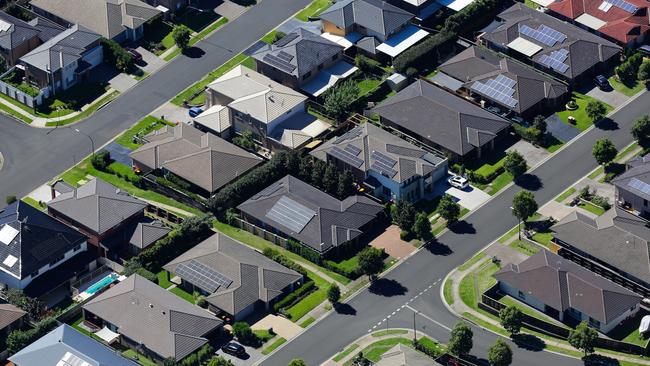Reserve Bank had no choice but to hike rates aggressively
The RBA’s decision to speed up rate increases will send a tremor through the housing market, but the move will ultimately reduce the mortgage pain in the long term.

The Reserve Bank’s decision to sharply accelerate the pace of rate increases this month will send a tremor through the country’s highly indebted housing market, but the aggressive move should be welcomed overall as it will ultimately reduce the degree of mortgage pain suffered over the longer term.
The central bank raised its official cash rate by 50 basis points to 0.85 per cent on Tuesday. The hike was twice that expected by economists, but the move brought the RBA in line with global peers such as the US Federal Reserve, the Bank of Canada and the Reserve Bank of New Zealand, all of which have recently hiked by the same amount.
The unexpected size of the interest rate increase indicates that the RBA has come to terms with the fact that it badly misjudged the extent of the inflation surge now swamping the economy, making aggressive policy action the only real choice on offer.
The RBA could have chosen to plod along with a further 25 basis point rise this month, but that would have only confirmed its failure to fully grasp the severity of the grim situation now confronting the economy.
Consumer prices rose at their fastest pace in 20 years in the first quarter, and second-quarter consumer price index data due in late July promise to be even uglier. Inflation might spike in coming months to levels not seen since the 1980s.
RBA governor Philip Lowe acknowledged the bleak outlook in his statement when announcing the interest rate hike.
“Inflation in Australia has increased significantly … higher prices for electricity and gas and recent increases in petrol prices mean that, in the near term, inflation is likely to be higher than was expected a month ago,” he said.
It’s an economic environment that has forced the RBA into acting with far greater forward-looking conviction, something that has been lacking from its actions for a while.
“The RBA board has radically shifted gear,” said Gareth Aird, head of Australian economics at the Commonwealth Bank. “The RBA board will revert to once again being forward looking.”
Mr Aird is now forecasting interest rate cuts in late 2023 given that the RBA has elected to act with speed and aggression earlier than expected.
While it may not feel like it, the aggressive policy action this month is a step in the right direction that gets the Reserve Bank closer to the point of being on top of the immense inflation challenge, rather than the far more dangerous position of continually lagging behind the policy curve.
For the RBA itself, the decisive action now means it is far less likely to face the accusation that it acted too timidly and allowed the inflation genie even more time out of the bottle.
The so-called front loading of interest rate increases also puts the RBA in a better position ahead of a looming exhaustive government review that will delve deeply into its board structure, inner decision-making processes and broader mandate.
But for new home buyers servicing huge mortgages on average incomes or less, the prospect that the RBA will deliver further large interest rate increases over coming months will be generating widespread anxiety.
It’s been over a decade since the RBA last raised interest rates, meaning more than a million households nationally have never experienced rising mortgage costs and the financial pains that follow.
To be sure, there is danger ahead. Money market traders, who predicted the start of interest rate increases in May well ahead of the RBA and virtually all bank economists, expect the official cash rate will stand at around 3.4 per cent by April 2023. That would be a devastating outcome for those on the margins of the mortgage market.
The money market bets might not be realised in full, but it is confirmation that many believe the RBA is going to have to work very hard to tame inflation.
Aggressive interest rate hikes from the RBA now are a necessary tonic needed to avoid even worse pain further out.
The Wall Street Journal



